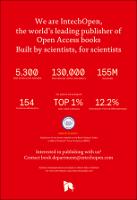Chapter The Zebrafish Kupffer’s Vesicle: A Special Organ in a Model Organism to Study Human Diseases
Author(s)
Roxo-Rosa, Mónica
Lopes, Susana S.
Language
EnglishAbstract
The Kupffer’s vesicle (KV) is a small, ciliated organ transiently present during embryogenesis of the zebrafish and other teleosts. The KV is required to the establishment of visceral laterality, such as the heart on the left side, being also known by the name left-right organizer (LRO). The LRO is found in other vertebrates, including mice, rabbits, frogs and human embryos. Among these, the KV became an excellent model organ to investigate the early left-right events during development and in disease. Many ciliary molecular players associated to the human disease primary ciliary dyskinesia have been tested in the zebrafish looking at KV cilia and its downstream effects on flow and left-right markers. Additionally, given its morphology and molecular features, we proposed the KV as a model organ to study the molecular mechanisms of the renal cyst inflation that occurs in the autosomal dominant polycystic kidney disease. Although having no connection to the kidney, the KV mimics a renal cyst because it is a fluid-filled vesicle, lined by monociliated epithelial cells that express polycystin-2, which knockdown leads to the organ luminal enlargement through changes in ion/water epithelial transport. Here, we explore the usefulness of the zebrafish KV to model these diseases.
Keywords
Kupffer’s vesicle (KV), left-right (LR), left-right organizer (LRO), primary ciliary dyskinesia (PCD), autosomal dominant polycystic kidney disease (ADPKD)DOI
10.5772/intechopen.88266Publisher
InTechOpenPublisher website
https://www.intechopen.com/Publication date and place
2020Classification
Biochemistry


 Download
Download